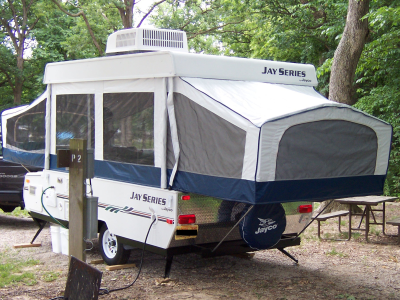The recent announcement that nine parks in Northern Ontario will be closed for camping has struck a nerve. Within days of the early October announcement, a groundswell of opposition has been brewing across the Northeast, where eight of the parks are located.
The nine Northern parks include; Caliper (Nestor Falls), Fushimi Lake (Hearst), Greenwater (Cochrane), Ivanhoe Lake (Foleyet), Mississagi (Elliot Lake), Obatanga (north of Wawa), Rene Brunelle (Kapuskasing), The Shoals (west of Chapleau) and Tidewater (Moosonee). Springhurst in Midhurst is also closed for camping.
A Facebook page, Friends of Ivanhoe Lake Provincial Park, has been established and a blockade at Rene Brunelle Provincial Park was held. The Federation of Northern Ontario Municipalities (FONOM) has facilitated public meetings in Hearst, Timmins and Cochrane.
“The level of frustration is plausible,” said FONOM President Al Spacek. “It's the average, hard-working family person who is very upset. Their lifestyle is being threatened and it has been repeated to me many times that they are fed up and not going to take it any more. The government has misjudged what they are doing.”
Spacek held a meeting with Minister of Natural Resources Michael Gravelle Oct. 18 and submitted a report compiled from the public meetings and former ministry employees.
“We pointed out to the minister that many of these parks can be operated at low cost, and in some cases at break even or a profit,” Spacek said. “Not all of them but some.”
Following the meeting, Spacek said he was optimistic and asked for a short turn around for a response. Gravelle said he would respond in a few weeks.
In announcing the changes at the parks, the ministry stated in a press release that the parks had very low visitation rates. However, other parks not slated for a change in designation had lower July-August occupancy rates, especially in the northwest, than some of those that will be closed for camping.
According to 2011 and 2010 statistics, published by the ministry, three parks closed for camping – Fushimi, Ivanhoe Lake and Rene Brunelle – were at occupancy rates (respectively) in 2011 at 62 per cent, 55 per cent and 45 per cent. These rates had all increased from the previous year.
Some parks in the northwest continuing to offer camping had lower July-August occupancy rates and were showing decreases in 2011. These included Pancake Bay (43 per cent), White Lake (31 per cent), Sioux Narrows (27 per cent) Lake Superior (52 per cent). Others in that region remaining stable showed rates ranging from 45 to 42 per cent.
In the Northeast, Kap-Kig-Iwan in Englehart had a four per cent July-August occupancy rate last year while Missinaibi, between Hearst and Chapleau, had 29 per cent. Both still offer camping.
The announcement means there will not be provincial park camping on the Trans Canada Highway for a distance of about 750 kilometres between Temagami and Greenstone.
Malcolm MacDonald, a spokesperson for the Friends of Ivanhoe Lake group, said the announcement came as quite a shock and without consultation.
“It was a complete surprise about Ivanhoe since it is one of the last parks I would have thought of to be closed in this area,” he said. “Especially since it is so close to Timmins, which is the biggest population centre north of Sudbury and it is central enough to service Chapleau, Cochrane and Kapuskasing.”
MacDonald, a former ministry supervisor in the northeast, has been a seasonal camper at Ivanhoe for the past 14 years.
“The biggest issue they (MNR) keep coming back with is capital costs in the future,” MacDonald said.
“But they need to look at where they spend the money and when.”
Ivanhoe needs a new water system at a cost of about $500,000, but the ministry continues to build “wonderful and fantastic comfort stations” that include heated floors in showers.
“Is it more important to have warm feet or safe drinking water?” he asked.
Spacek said closing the parks will only save about $1 million operationally, and the government's “nickel and diming” is in stark contrast to what it has spent to relocate two power plants.
“The Drummond Report warned against nickel and diming and the (Northern Ontario) Growth Plan includes tourism as part of our economic development. So what kind of message are we sending,” he said.
Seasonal campsites are in demand, but provincial park policy dictates that no more than 25 per cent of the sites can be set aside for that use.
“In many parks there is a waiting list of two to one for seasonal spots but the policy is inhibiting the profitability side,” Spacek said. “Why not go where the demand and money is? Do they want revenue or park policy?”
The parks will remain open for day use but MacDonald said he doubts people will drive to spend a few hours at a park.
“We can walk out our back door and have day use,” he said.




